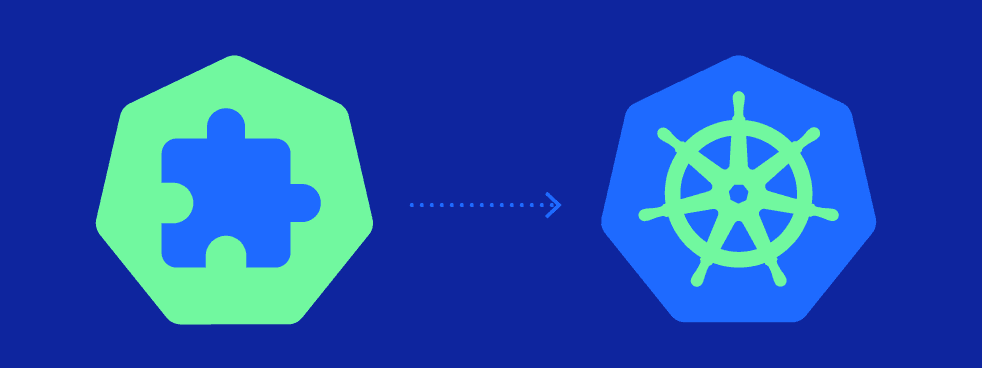Kube Resource Orchestrator (kro)
-
Mateus Pavei Menegon
- 12 May, 2025
- 04 Mins read

Kube Resource Orchestrator (kro) is an open-source, Kubernetes-native framework designed to streamline the creation and management of complex Kubernetes resource configurations. By allowing operators to group related resources into reusable units, kro simplifies deployments and enhances manageability across diverse environments.
What is kro?
kro enables platform and DevOps teams to define custom Kubernetes APIs using straightforward configurations. These custom APIs, known as ResourceGraphDefinitions (RGDs), encapsulate a set of Kubernetes resources and the logical operations between them. This abstraction allows developers to deploy and manage applications as single units, without delving into the intricacies of individual resource configurations.
Key Features
- ResourceGraphDefinition (RGD): Acts as a blueprint for creating new Kubernetes APIs that deploy multiple resources together. RGDs define the schema, resources, dependencies, conditions, and status for the grouped resources.
- Common Expression Language (CEL): kro leverages CEL for logical operations, enabling value passing between resources and incorporating conditionals into custom API definitions. This facilitates dynamic configurations based on resource states.
- Dependency Management: By treating resources as a Directed Acyclic Graph (DAG), kro determines the correct order for resource creation, ensuring that dependencies are respected and resources are provisioned in the appropriate sequence.
- Custom Resource Definitions (CRDs): Upon applying an RGD, kro generates and registers a new CRD in the cluster, providing a simplified API for developers to interact with complex resource groupings.
Benefits
- Simplified Developer Experience: Developers can deploy applications using custom APIs without needing deep Kubernetes expertise, as the underlying complexity is abstracted away.
- Standardization: Platform teams can enforce organizational standards and best practices by defining RGDs, ensuring consistent deployments across environments.
- Collaboration: Security, compliance, and platform teams can collaborate to create RGDs that encapsulate necessary policies and configurations, promoting a unified approach to resource management.
- Cloud-Agnostic: kro supports integration with various cloud providers, allowing for the orchestration of both Kubernetes-native and external cloud resources within the same framework.
Getting Started
Install kro: Set up kro in your Kubernetes cluster
Fetch the latest release version from GitHub
export KRO_VERSION=$(curl -sL \ https://api.github.com/repos/kro-run/kro/releases/latest | \ jq -r '.tag_name | ltrimstr("v")' )Validate
KRO_VERSIONpopulated with a versionecho $KRO_VERSIONInstall kro using Helm
helm install kro oci://ghcr.io/kro-run/kro/kro \ --namespace kro \ --create-namespace \ --version=${KRO_VERSION}Define an RGD: Create a ResourceGraphDefinition that specifies the desired resources, their configurations, and dependencies.
resourcegraphdefinition.yaml
apiVersion: kro.run/v1alpha1 kind: ResourceGraphDefinition metadata: name: my-application spec: # kro uses this simple schema to create your CRD schema and apply it # The schema defines what users can provide when they instantiate the RGD (create an instance). schema: apiVersion: v1alpha1 kind: Application spec: # Spec fields that users can provide. name: string image: string | default="nginx" ingress: enabled: boolean | default=false status: # Fields the controller will inject into instances status. deploymentConditions: ${deployment.status.conditions} availableReplicas: ${deployment.status.availableReplicas} # Define the resources this API will manage. resources: - id: deployment template: apiVersion: apps/v1 kind: Deployment metadata: name: ${schema.spec.name} # Use the name provided by user spec: replicas: 3 selector: matchLabels: app: ${schema.spec.name} template: metadata: labels: app: ${schema.spec.name} spec: containers: - name: ${schema.spec.name} image: ${schema.spec.image} # Use the image provided by user ports: - containerPort: 80 - id: service template: apiVersion: v1 kind: Service metadata: name: ${schema.spec.name}-service spec: selector: ${deployment.spec.selector.matchLabels} # Use the deployment selector ports: - protocol: TCP port: 80 targetPort: 80 - id: ingress includeWhen: - ${schema.spec.ingress.enabled} # Only include if the user wants to create an Ingress template: apiVersion: networking.k8s.io/v1 kind: Ingress metadata: name: ${schema.spec.name}-ingress annotations: kubernetes.io/ingress.class: alb alb.ingress.kubernetes.io/scheme: internet-facing alb.ingress.kubernetes.io/target-type: ip alb.ingress.kubernetes.io/healthcheck-path: /health alb.ingress.kubernetes.io/listen-ports: '[{"HTTP": 80}]' alb.ingress.kubernetes.io/target-group-attributes: stickiness.enabled=true,stickiness.lb_cookie.duration_seconds=60 spec: rules: - http: paths: - path: "/" pathType: Prefix backend: service: name: ${service.metadata.name} # Use the service name port: number: 80Apply the RGD: Deploy the RGD to your cluster, which will generate the corresponding CRD.
kubectl apply -f resourcegraphdefinition.yamlCheck the status of the resources created by the ResourceGraphDefinition using the
kubectlcommand:kubectl get rgd my-application -owideYou should see the ResourceGraphDefinition in the
Activestate, along with relevant information to help you understand your application:NAME APIVERSION KIND STATE TOPOLOGICALORDER AGE my-application v1alpha1 Application Active ["deployment","service","ingress"]Instantiate Resources: Use the new custom API to create instances of your defined resource groupings.
Create a new file named
instance.yamlwith the following content:apiVersion: kro.run/v1alpha1 kind: Application metadata: name: my-application-instance spec: name: my-awesome-app ingress: enabled: trueUse the
kubectlcommand to deploy the Application instance to your Kubernetes cluster:kubectl apply -f instance.yamlCheck the status of the resources
kubectl get applicationsAfter a few seconds, you should see the Application instance in the
Activestate:NAME STATE SYNCED AGE my-application-instance ACTIVE True 10sCheck the resources created by the Application instance:
kubectl get deployments,services,ingressesYou should see the
Deployment,Service, andIngresscreated by the Application instance.NAME READY UP-TO-DATE AVAILABLE AGE deployment.apps/my-awesome-app 3/3 3 3 69s NAME TYPE CLUSTER-IP EXTERNAL-IP PORT(S) AGE service/my-awesome-app-service ClusterIP 10.100.167.72 <none> 80/TCP 65s NAME CLASS HOSTS ADDRESS PORTS AGE ingress.networking.k8s.io/my-awesome-app-ingress <none> * 80 62s
For detailed instructions and examples, refer to the official documentation at kro.run.
Community and Contributions
kro is a collaborative project supported by major cloud providers, including Google Cloud, AWS, and Azure. The project welcomes contributions from the community. You can participate by submitting issues, contributing code, or joining discussions on the GitHub repository and the Kubernetes Slack channel #kro
By providing a Kubernetes-native, cloud-agnostic approach to resource orchestration, kro empowers teams to manage complex deployments more efficiently, fostering innovation and consistency across development and operations.